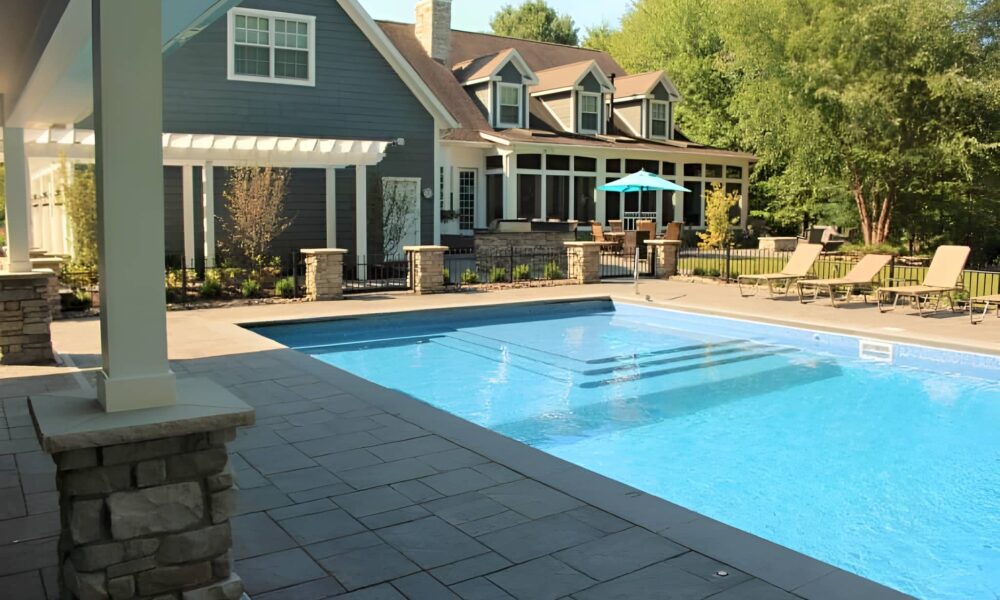Permits, Zoning, and Regulations to Know When Building a Pool in Dayton Ohio

Building a pool is an exciting project, but it comes with rules that homeowners and contractors must follow. Montgomery County, Ohio has specific regulations designed to protect safety, property values, and community standards. Understanding permits, zoning laws, and inspections is essential before breaking ground. Whether you are a homeowner considering your first backyard pool or a contractor planning several projects, knowing these rules will make the process smoother.
Why Permits and Zoning Matter
A pool is more than a backyard feature. It changes how a property is used, affects safety, and in some cases influences stormwater drainage. That is why counties and cities require permits. Montgomery County uses zoning codes and building regulations to ensure pools meet legal and safety standards. Ignoring these rules can lead to fines, project delays, or even the requirement to remove a pool that was built without approval.
The Role of Zoning in Montgomery County
Zoning laws dictate how land is used. In Montgomery County, zoning rules outline where you can place a pool and how close it can be to property lines, utilities, or existing structures.
Common Zoning Requirements for Pools
- Setback distances determine how far the pool must be from property lines or buildings. These rules protect neighbors and reduce disputes.
- Lot coverage rules limit how much of your property can be covered by structures, including pools and decks.
- Easements and utilities must remain clear. Pools cannot be placed where they would block access to underground lines or storm drains.
Before moving forward, homeowners or contractors should check with the local zoning office or planning commission. Each city within Montgomery County may have slight variations in pool zoning requirements.
Permit Process for Pool Installation
The permit process ensures that the pool will be built safely and according to local standards. Both in-ground and above-ground pools usually require a permit. Here is how the process typically works.
Steps to Obtain a Pool Permit
- Application submission. You provide details about the pool design, dimensions, location, and any additional structures such as decks or fences.
- Review by officials. The county or city reviews the application to confirm that zoning and building codes are followed.
- Approval and fees. Once approved, a permit is issued, and fees are paid. These fees vary depending on the size and type of pool.
- Inspections. During construction, inspections take place to confirm compliance with safety and building codes.
Skipping this process can create serious issues. For example, if a pool is installed without permits, the county can require costly changes or even removal.
Safety Codes and Requirements
Pool safety is one of the most important aspects of local regulation. Montgomery County enforces safety standards that apply to both homeowners and contractors.
Key Safety Requirements
- Barriers and fencing. Pools must be enclosed by a barrier or fence of a certain height to prevent accidents, especially involving children.
- Gates and locks. Gates leading to the pool area must be self-closing and lockable.
- Electrical safety. Pools require proper grounding and bonding for electrical systems, along with safe installation of lighting and pumps.
- Drainage and filtration. Systems must meet health standards to keep water clean and reduce hazards.
These codes may seem strict, but they are designed to reduce accidents and protect families. Contractors familiar with these requirements can help homeowners avoid mistakes.
The Role of Contractors
Hiring a licensed contractor can simplify the process. Experienced contractors understand county requirements and can manage the permit process on behalf of homeowners. They know how to position a pool within setback limits, design barriers that meet code, and coordinate inspections. For homeowners unfamiliar with legal requirements, this expertise saves time and stress.
When searching for help with pool installation Dayton Ohio, it is important to verify that the contractor has experience with Montgomery County’s permitting system. Asking about past projects and checking references can provide peace of mind.
Homeowners’ Associations and Additional Rules
In addition to county requirements, some neighborhoods have homeowners’ associations (HOAs). These associations may set their own rules about pool design, size, or location. In some cases, an HOA may prohibit pools altogether.
HOA approval usually comes before county permits. Homeowners should check their HOA covenants and submit required paperwork before applying for a county permit. Skipping this step can result in conflicts with neighbors or the association.
Common Mistakes to Avoid
Even with clear regulations, mistakes happen. The following issues often cause delays or added costs:
- Starting construction without permits. This leads to fines and stop-work orders.
- Ignoring setbacks. Pools built too close to property lines may need to be altered.
- Skipping inspections. Passing inspections is a requirement for the final approval of a pool.
- Overlooking HOA rules. A county permit does not override HOA restrictions.
By planning ahead and following the rules, homeowners and contractors can avoid these problems.
Inspections and Final Approval
Inspections happen throughout the building process. Inspectors check excavation, electrical work, and barriers. A final inspection occurs once the pool is complete. Only after passing all inspections does the county issue a certificate of completion. This document confirms that the pool is safe and legal to use.
Cost Considerations
Permits and inspections come with fees, and the costs vary depending on the size and type of pool. In addition to county fees, homeowners should budget for potential HOA application fees or design reviews. While these costs may feel like an extra burden, they help protect property value and safety.
Seasonal and Weather Considerations
Montgomery County’s seasonal weather plays a role in pool planning. Construction is easier in spring and summer when the ground is dry. However, applying for permits early in the year helps secure a place in the construction schedule. Homeowners planning pool installation Dayton Ohio should consider the time needed for permits, HOA approvals, and contractor availability.
Balancing Homeowner and Contractor Needs
Homeowners want a safe, attractive pool, while contractors focus on building efficiently and within legal limits. Regulations create a shared framework that balances both sides. When both parties understand the rules, projects move faster and with fewer surprises.
Conclusion
Building a pool in Montgomery County involves more than choosing a design. Permits, zoning rules, safety codes, and HOA requirements all play a role. While the process may seem complex, it exists to ensure safety and protect property value. Homeowners benefit from understanding these steps before beginning construction, and contractors provide valuable expertise in navigating them. With careful planning and respect for regulations, a backyard pool can be a safe and lasting addition to a home.

Source: Permits, Zoning, and Regulations to Know When Building a Pool in Dayton Ohio



